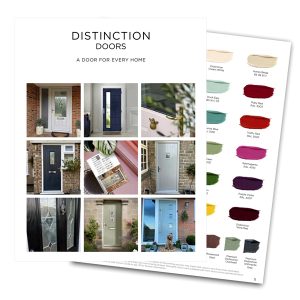Do Composite Doors Keep Heat In?
Homeowners often seek ways to improve their home’s energy efficiency, and composite doors stand out as a smart choice. With their unique construction and advanced materials, these doors provide excellent thermal insulation, helping to keep heat inside. Let’s explore how composite doors achieve this and why they make a great investment for energy-conscious homeowners.
Understanding Composite Door Construction
Composite doors consist of multiple materials, each chosen for specific benefits. A solid timber core offers strength and density, while layers of uPVC or GRP (glass-reinforced plastic) enhance durability and weather resistance. These materials work together to create a robust, energy-efficient door that minimizes heat loss.
How Composite Doors Retain Heat
Insulated Core
The solid core at the heart of a composite door traps heat effectively. Unlike hollow or lightweight doors, the dense timber construction provides a natural barrier against heat transfer, keeping warmth inside the home.
Weatherproof Seals
Composite doors feature high-quality seals around the edges, preventing drafts and stopping cold air from entering. These seals ensure that the door fits snugly within its frame, creating an airtight barrier.
Thermally Efficient Outer Layers
The uPVC or GRP outer skin enhances the door’s thermal performance. These materials resist heat transfer, ensuring the door remains energy-efficient in all weather conditions.
Energy Ratings for Composite Doors
Many composite doors come with official energy ratings to demonstrate their efficiency. Look for doors with high energy ratings, as these models offer superior insulation and help lower heating bills. Choosing a door with advanced thermal technology ensures optimal performance.
Why Choose Composite Doors for Heat Retention?
Lower Energy Costs
By reducing heat loss, composite doors lower your reliance on central heating, saving money on energy bills over time.
Increased Comfort
With a composite door, your home stays warmer in winter and cooler in summer. This consistency in temperature creates a more comfortable living environment.
Environmentally Friendly
Retaining heat reduces energy consumption, which helps decrease your carbon footprint. Composite doors support eco-friendly living while providing practical benefits.
How to Maximise Heat Retention with Composite Doors
Choose Double or Triple Glazing
If your composite door includes glass panels, opt for double or triple glazing. These options provide additional insulation and prevent heat from escaping through the glass.
Ensure Proper Installation
Poor installation can compromise a door’s thermal efficiency. Hire a professional installer to ensure a secure fit and airtight seals around the frame.
Maintain Seals and Hinges
Regularly check and maintain the seals and hinges to ensure they remain intact. Damaged seals can lead to drafts, reducing the door’s effectiveness at retaining heat.
Comparing Composite Doors to Other Options
uPVC Doors
While uPVC doors offer decent insulation, they lack the dense core of a composite door. Composite doors provide better heat retention, making them a superior choice for energy efficiency.
Wooden Doors
Traditional wooden doors may look appealing, but they can warp or crack over time, leading to heat loss. Composite doors resist these issues and maintain their insulation properties for years.
Conclusion
Composite doors excel at keeping heat in, thanks to their insulated core, weatherproof seals, and thermally efficient outer layers. These doors not only enhance your home’s energy efficiency but also contribute to lower energy bills and increased comfort. By choosing a high-quality composite door and ensuring proper installation, you can enjoy a warm, cozy home while making an eco-friendly choice.

